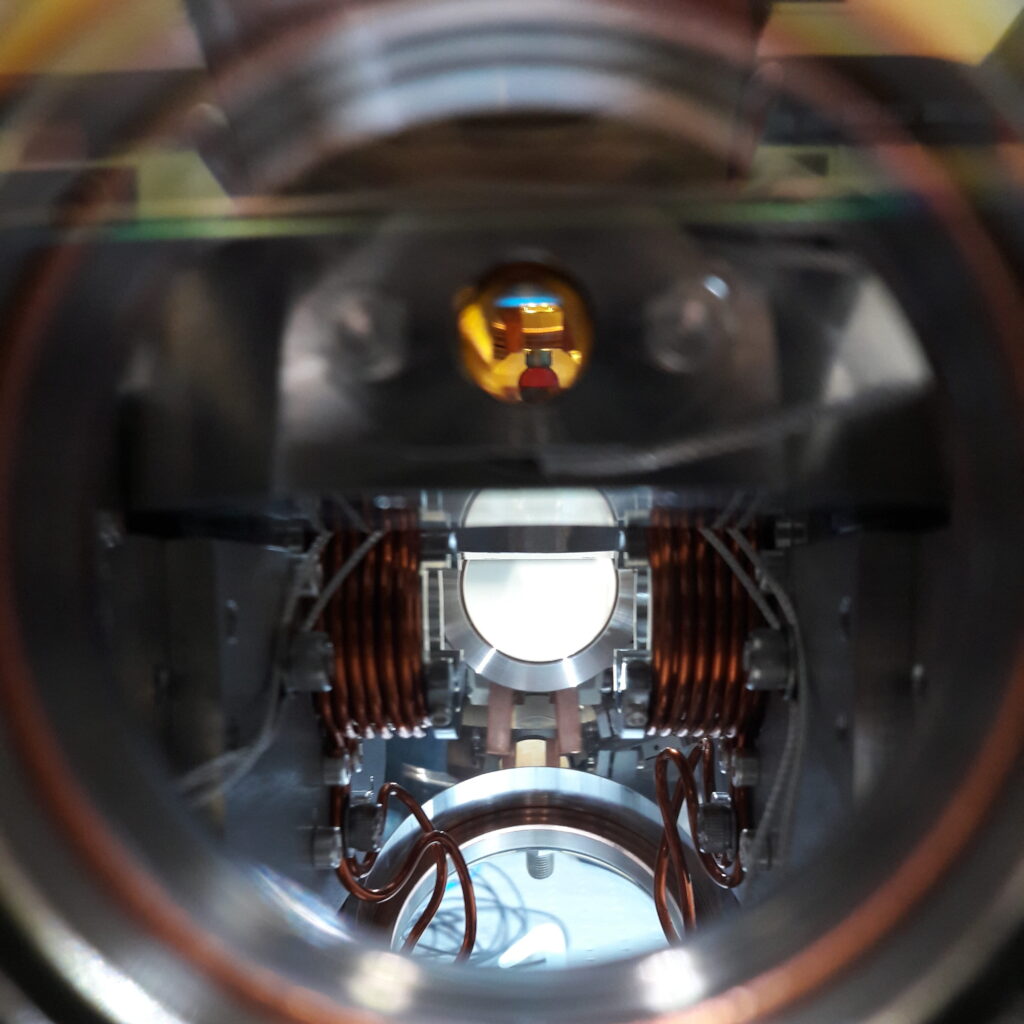Why?
Quantum engineering consists in building systems for safer communications, faster computations or more precise measurements out of elementary quantum “bricks”. Among such “bricks”, optical photons have many useful properties. They are easy to manipulate individually, their “quantumness” survives outside a vacuum chamber or a cryostat, and they can be transmitted over long distances. Unfortunately, they don’t interact with each other, which it makes it difficult to actually “assemble” something out of them.

How?
Optical photons don’t interact with each other, but atoms do. So we create interactions between photons using interactions between atoms. We send the photons through a small laser-cooled gas, and use a laser to convert them into atomic excitation waves. These waves involve highly-excited Rydberg states, where atoms interact with each other very strongly. As a result, a single photon can fly straight through the gas, but other photons arriving at the same time are scattered around.
If one puts the atoms in a cavity, things change a little. Instead of being scattered randomly, photons bounce off the cavity in a known direction, but the presence of the first photon in the gas flips their phase. This mechanism can be used to create non-classical light and realize two-photon quantum gates.
In addition, the flexible geometry of our cavity allows us to either confine the photons to a single mode, or to let them wander around and organise themselves into exotic quantum states.





